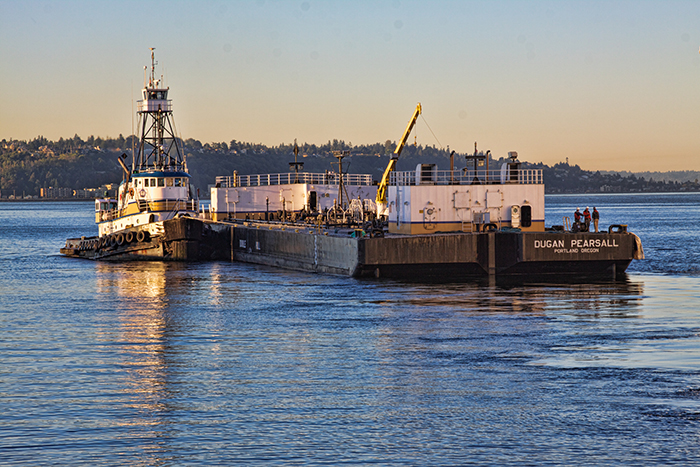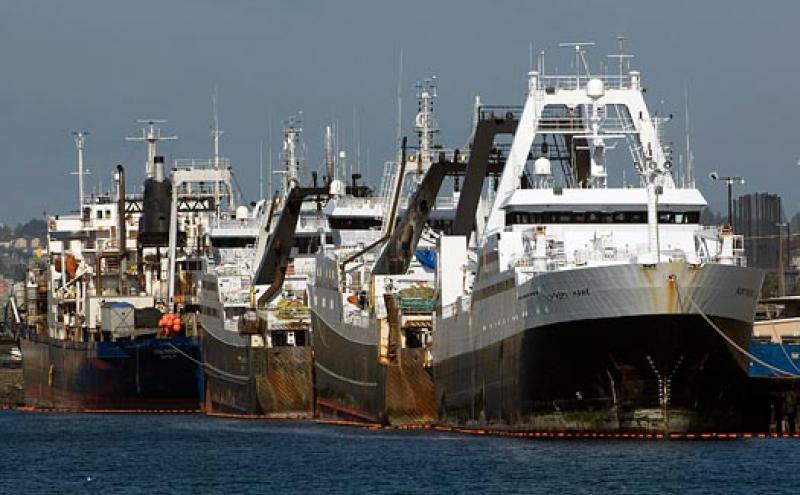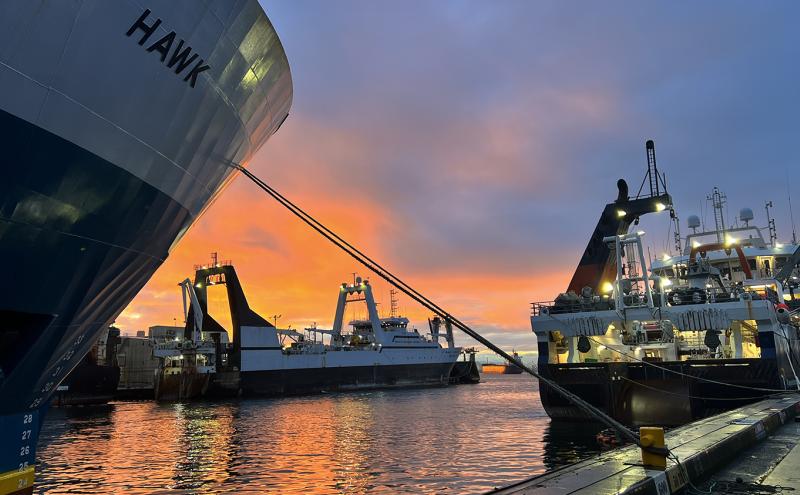
Throughout the year Terminal 91 bustles with activity as ships rotate through to make this 206-acre Port of Seattle property their temporary home. It is the perfect spot for a variety of types of ships to layover as they prepare for upcoming journeys or wind down from expeditions to Alaska and other locations around the world.
At certain times of year the 8,000 feet of moorage can become a hot commodity as these visiting vessels pause to stock up on food and supplies, perform repairs, make crew changes, and take care of other maritime services.
Terminal 91 offers many services and amenities onsite or close by. While at port, vessels can access an onsite net repair yard, plug into shore power, access potable water, and connect with maritime trades and crafts vendors. There is also onsite warehouse space, open storage availability, forklift rentals, and around the clock security.
Here’s a peek at what you might see in the water at Terminal 91 throughout the year.
Fishing vessels
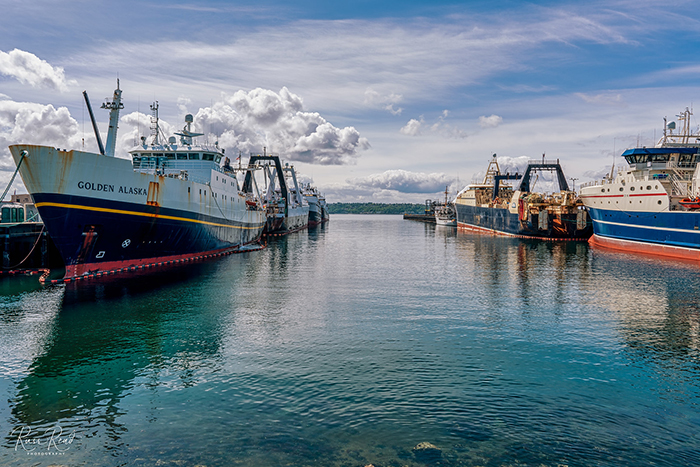
The North Pacific Fishing Fleet is made up of commercial factory trawlers, also known as fish factories or catcher/processors. These ships make Terminal 91 their home port between fishing seasons. When they're not in port the fleet harvests pollock, hake, yellowfin sole, cod, and other flat fish off the coast of Washington Oregon, and Alaska.
Vessels range in size from 250 feet to over 350 feet long, and are equipped to process fish into frozen fillets within hours of being caught. These ships employ crews ranging from 35 to 150 people from all over the world.
Motherships can also be found moored at Terminal 91. The floating fish processing factories do not catch fish and instead receive fish from their fleet of smaller catcher boats on the fishing grounds. Three motherships are currently home ported at Terminal 91.
Fun fact: The largest vessel in the North Pacific Fishing Fleet that home ports in Seattle is the Alaska Ocean at 376 feet. It has the capacity to catch and process up to 225 metric tons of frozen finished product daily.
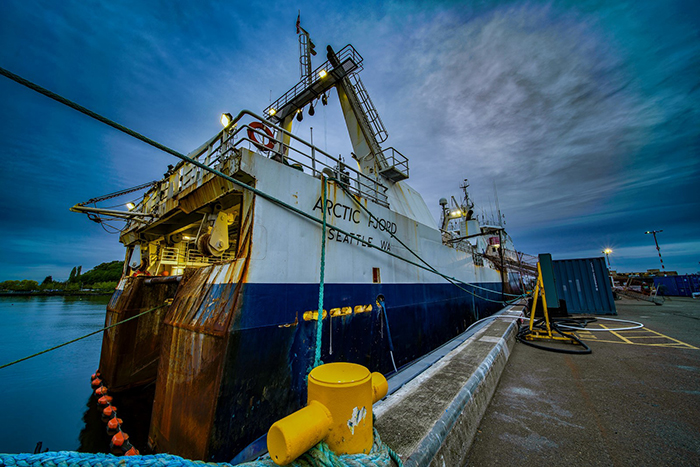
Fishers' journey: In January, vessels head to Alaska for pollock A Season and start trickling back to Terminal 91 in late March. Ships stay at port until mid-May, and then come and go in May and June during hake fishing off of the coast of Washington and Oregon.
Terminal 91 is at its busiest in the winter when the fishing fleet are laying over, occupying all 8,000 linear feet of moorage. During this time, vessels offload filets, surimi, fish meal, and fish oil; perform repair work on ships; back load; refuel; load food and supplies; and christen new vessels.
Vessel spotlight: The Blue North was built in 2016 with a design that helps ensure crew safety and high-quality production. A moonpool, or opening inside the vessel, keeps crew out of the weather and waves while serving as the point of entry for the freshly caught cod. The cod then travels over a low voltage charge that stuns the fish and prevents it from producing hormones that negatively impact the taste and quality.
Research vessels
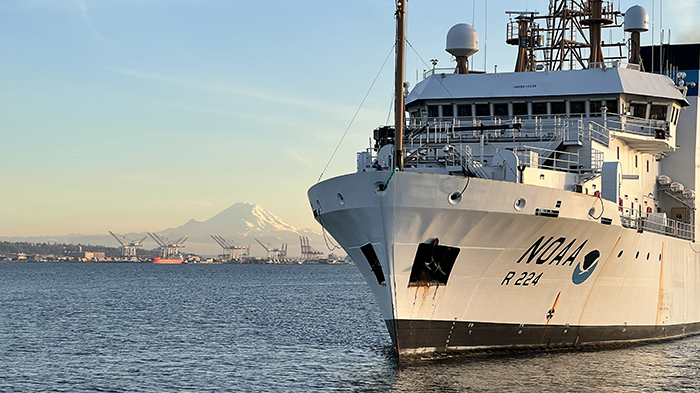
Research vessels like the University of Washington’s Thomas G. Thompson, and the National Oceanic and Atmospheric Administration’s (NOAA) Oscar Dyson can be found at Terminal 91 taking a breather from world travel at any given point throughout the year.
These ships navigate waters around the world performing all forms of oceanographic work. They often spend around two weeks in port exchanging scientific equipment with other research vessels, loading provisions, making crew changes, and performing any repair work needed.
Research vessels are less common during the winters at Terminal 91, as many vessels opt for calmer waters outside the Pacific Northwest.
Small cruise ships
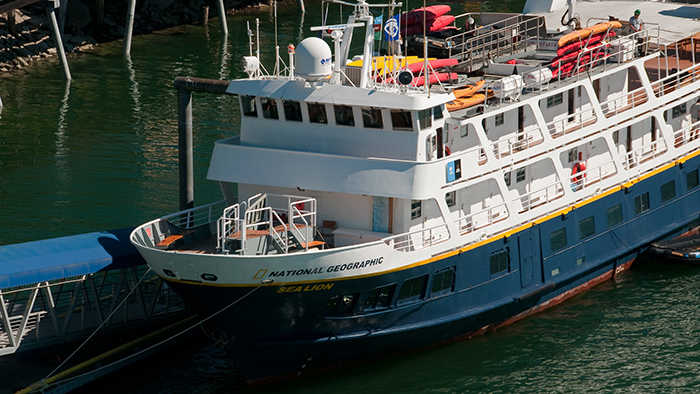
During the spring and fall seasons, small 225-foot cruise vessels like the Venture and Quest from Lindblad Expeditions-National Geographic can be found at port as they get ready for the summer Alaska cruise season. These ships hold around 100 guests and offer a more intimate and personal experience.
They spend their time at Terminal 91 provisioning, fueling, clearing customs, and getting ready for their next adventure.
In colder months outside of the Alaska cruise season, these ships can be found in warmer climates like Central America, Belize, Guatemala, Panama, and Colombia.
Super yachts
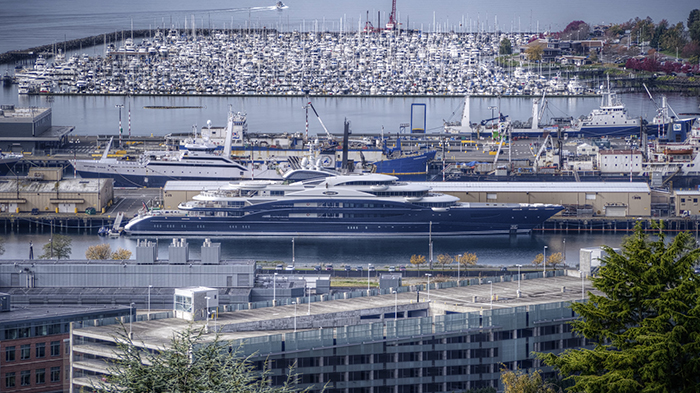
Super yachts, usually at least 80 feet in length, can be found at Terminal 91 in spring and fall as they transit to and from Alaska and around the world at the owner’s whim. Terminal 91 usually sees at least one super yacht a year. Crews of between six and 20 (the owner is often not on board while the ship is at port) spend a couple weeks stocking up on food and supplies, performing repair work, and standing by for owners and their guests.
Super yacht spotlight: The 286-foot Lonian has an onboard a glass-bottom pool and can accommodate up to 27 crew members to care for 12 guests.
Ships of state
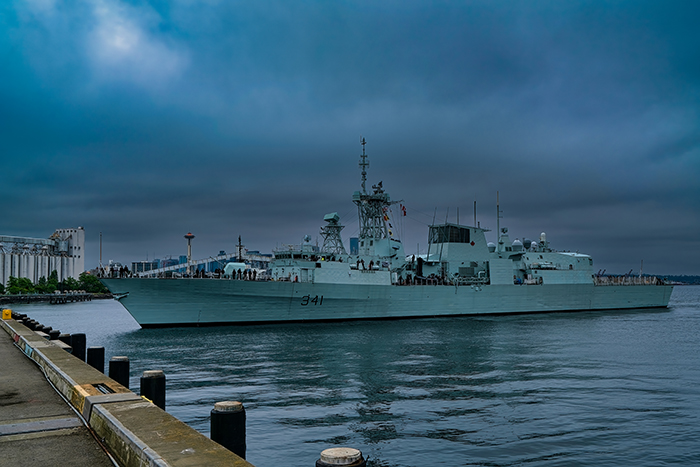
Ships of state, or government-owned ships that ensure the safety of trade and the U.S., like U.S. Coast Guard (USCG) vessels and Navy vessels use Port facilities during Seafair Fleet Week, other public engagement events, and when crew are provided leave in Seattle.
Ship of state spotlight: During Seafair Fleet Week, the U.S. Navy moored its 600-foot vessel at Terminal 91.
Tugs and barges
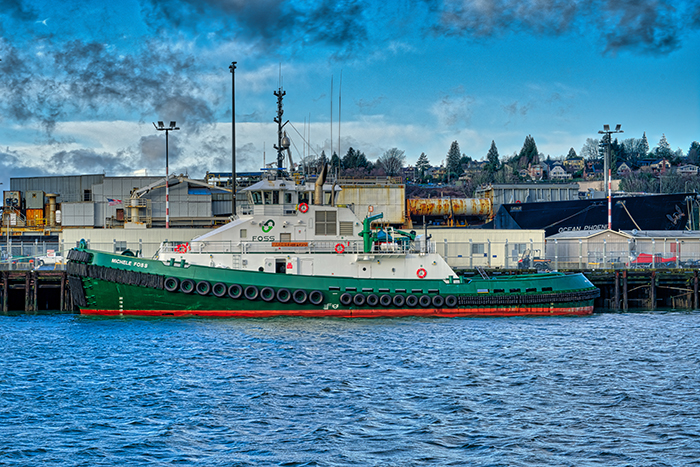
Tugs and barges can be found throughout the year at Port facilities. You might see harbor tugs, fuel barges, and derrick barges, used for offshore construction and repair work. Tugs and barges are idle when at port unless they are performing project work.
Barge spotlight: The DB Pacific Lifter, which spends time at Terminal 91, is the largest derrick barge on the west coast. Its lifting capacity is almost 1,000 tons — equal to the weight of a cargo ship or three Boeing 747 jets!
Here are few examples of tugs and barges you might see resting at Terminal 91:
- Harbor tugs: Foss Maritime has a lease to moor these tugs at Terminal 91. They provide 24/7 escorts, and assist container ships coming into port and ships going into the grain terminal
- Marine Construction Derricks: Performs work building piers and bridges in waters of multiple states and territories
- Material barges: Carry sand and gravel to local cement plants like Everett and Kenmore
- Container barges: Towed to and from Alaska all year by long-haul tugs
- Fuel barges: Fuel the fishing fleet, cruise ships, and research vessels
